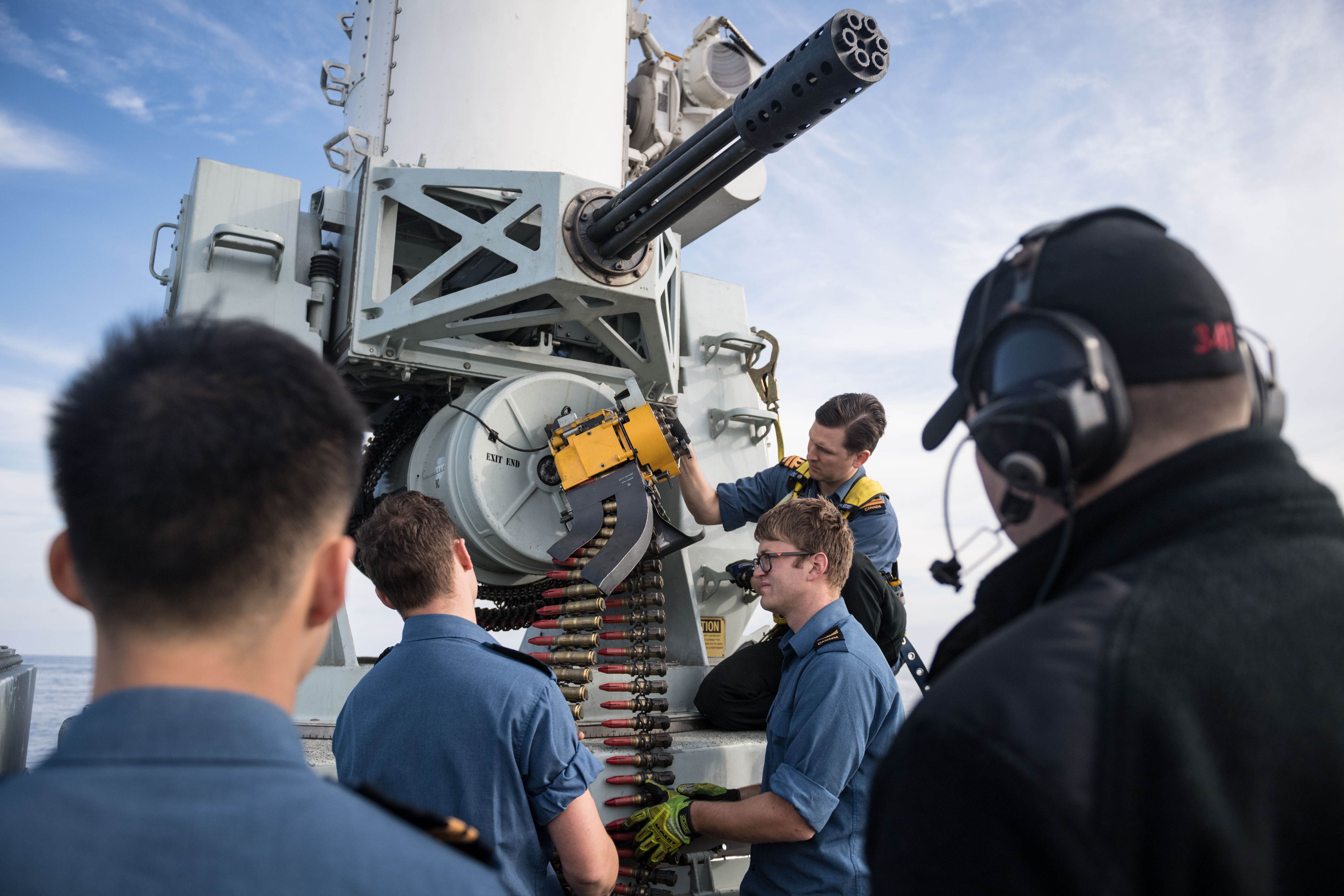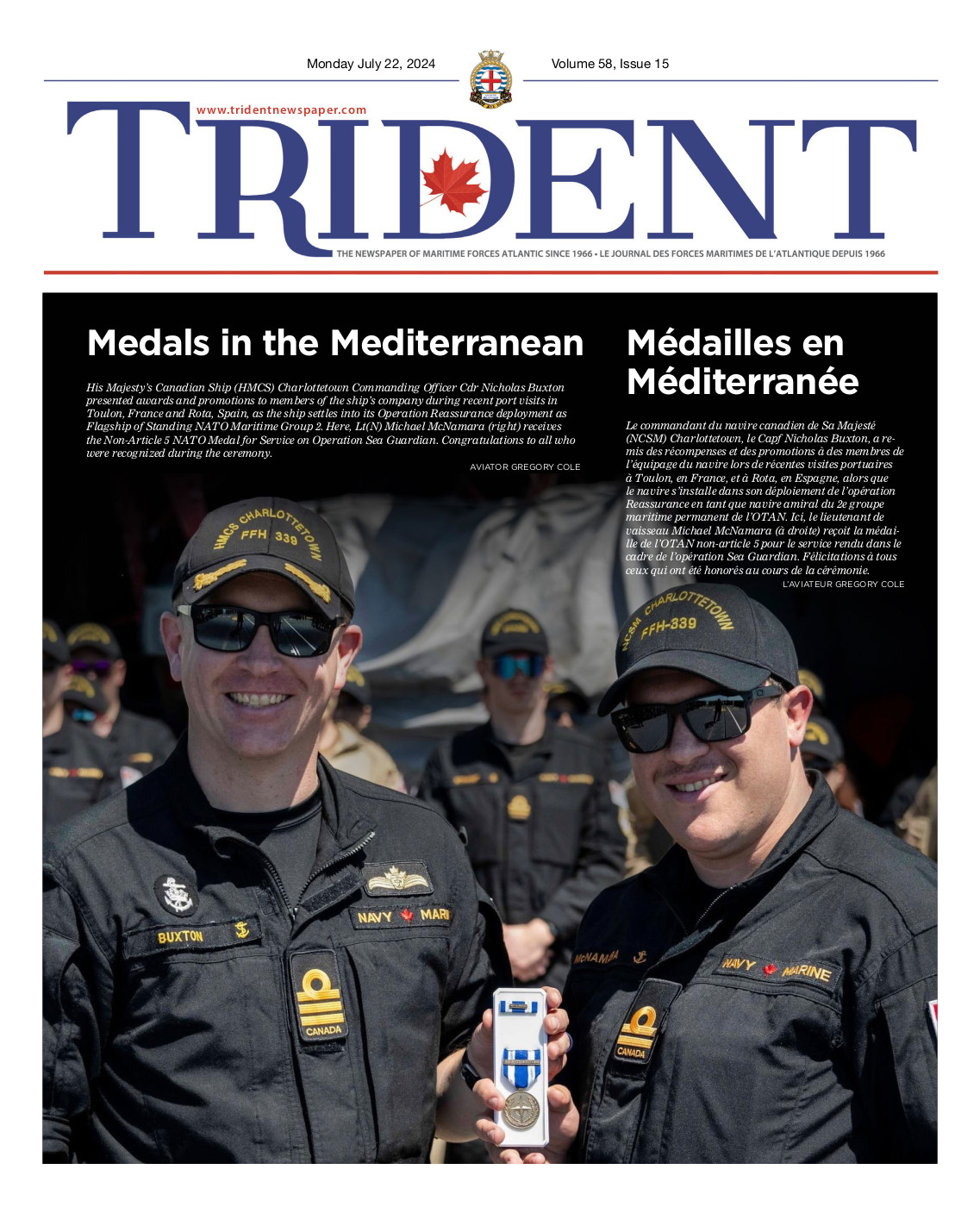
LS VICTORIA IOGANOV
Combat Systems Engineering: Ensuring HMCS Ottawa is Ready to Fight
By Capt Jenn Jackson,
HMCS Ottawa PAO
When most people think of the engineering department on a ship, they focus on those who are responsible to keep the ship floating and moving – two very vital requirements at sea.
However, warships have one other vital function it must be able to perform; it must be ready and able to fight.
HMCS Ottawa’s ability to fight is through the work of the Combat Systems Engineering Department.
“The Combat Systems Engineering Department or CSE is responsible for the preventative and corrective maintenance of all weapons and sensors onboard,” explains Lt(N) Dusan Brestovansky, Ottawa’s CSE Officer. “We are also responsible for firing the Close-In Weapons System, one of the last lines of defence for the ship.”
Employing five sub-occupations of Weapon Engineering Technicians (WEng Tech) and headed by the Naval Combat Systems Engineer, the CSE department is integrated one way or another with every department on the ship. Their scope of work includes sonars and radars, fire control systems, all armament and ammunition, both internal and external communications systems, and navigation systems. They are also responsible for driving the ship.
“During a typical watch, each WEng Tech will monitor systems, drive the ship, and complete rounds in addition to performing routine maintenance or trouble shooting,” adds PO1 Stuart MacDonald, Department Maintenance Coordinator. “We also have special duties we perform when needed, such as operating cranes and deploying underwater sensors.”
While all WEng Techs will eventually specialize in sonar, radar, fire control, armament or communications, typically, the first five years of their career is spent learning common skills such as safety, lock-out and tag out procedures, radiation hazard safety, and working aloft, while also getting a general familiarization in each specialty.
“The completion of the WEng Tech on-the-job performance record is a tremendous achievement,” says CPO2 Leo Cooper, CSE Chief. “It represents hundreds of hours, both at sea and alongside, spent studying, learning, and gaining experience with all of our systems.”
While at sea, a member from the CSE Department is always present in the Operations Room monitoring the various combat systems. When an issue is observed, the on-watch WEng Tech will perform first aid to try to rectify the fault, and if it is found to be complex or lengthy, the on-watch WEng Tech will log it, track it, and brief the senior technician who then coordinates the repair and briefs the CSE Officer. This careful tracking allows the department to be proactive.
“Logging and tracking issues allows us to analyse trends and from there predict systems that may require more substantial maintenance in the near future,” says Lt(N) Brestovansky. “One of the challenges we have at sea is the availability of parts; often, what we need is not on board the ship, so by looking ahead we are better able to avoid having a system offline due to missing parts.”
Part challenges aside, one of the aspects of CSE work is the opportunity to think outside the box when troubleshooting an issue.
“In a warfighting scenario where the ship sustains damage, CSE is vital to the effort,” says Lt(N) Brestovansky. “We are responsible for bringing back capability when things are damaged, aligning with the warfare priority. If radars are damaged, the ship loses part of its vision; if weapons or the systems needed to fire them are damaged, the ship loses part of its defences. My department works to keep the ship capable of both fighting and defending.”
While most of the weapons systems on the ship are used by different operators, CSE is responsible for maintaining them and the ammunition used.
“Just as it is necessary to clean a rifle after it is fired to ensure it doesn’t jam, it is necessary to clean the main gun on a warship for the same reason,” says PO1 David Dooling, Ammunition Custodian. “We also track all of the ammunition and explosives on the ship, from the smallest round for our pistols, to our torpedoes, to flares. We ensure the ammo and pyro is properly stored, loaded, and we track any potential issues, such as if there is a trend of misfires.”
As busy as the section is at sea, they are even busier ashore.
“When we are not at sea, we are preparing to go to sea,” says CPO2 Cooper. “When we are alongside, we are always in a work period, which means we have time to freely maintain all the systems, conduct major repairs that cannot be done at sea, and we are responsible for the handling of all man aloft paperwork, whether it is one of our own techs or a civilian from Fleet Maintenance Facility or a contractor.
“As a section, we are always having to prioritize the work that needs to be done and that often means looking six to 12 months ahead. Built into that prioritization is ensuring members of the department are able to balance the busy alongside schedule with down time at home with friends and family.”
While a small department, it certainly is mighty in holding and maintaining some of the most technical knowledge on the ship. While the Marine Systems Engineering Department ensures the ship continues to float and move, CSE is integrated into all departments making sure it is ready to fight.
“When you come right down to it, having a CSE department is what makes HMCS Ottawa a warship, instead of a ferry,” says PO1 MacDonald. “Weapons and sensors form the backbone of our fighting capability, and CSE is responsible for ensuring that backbone is ready to stand tall when called upon.”





